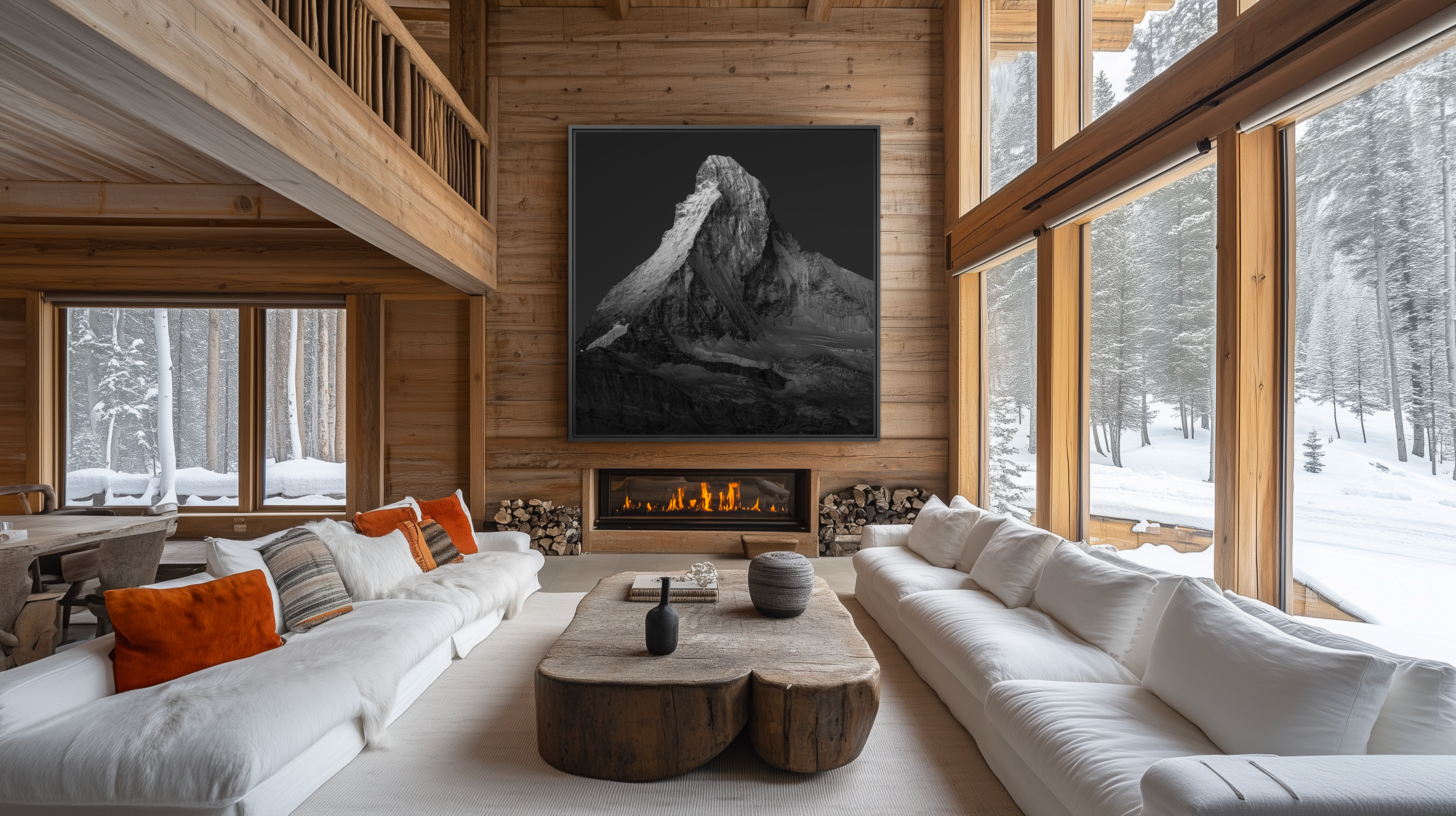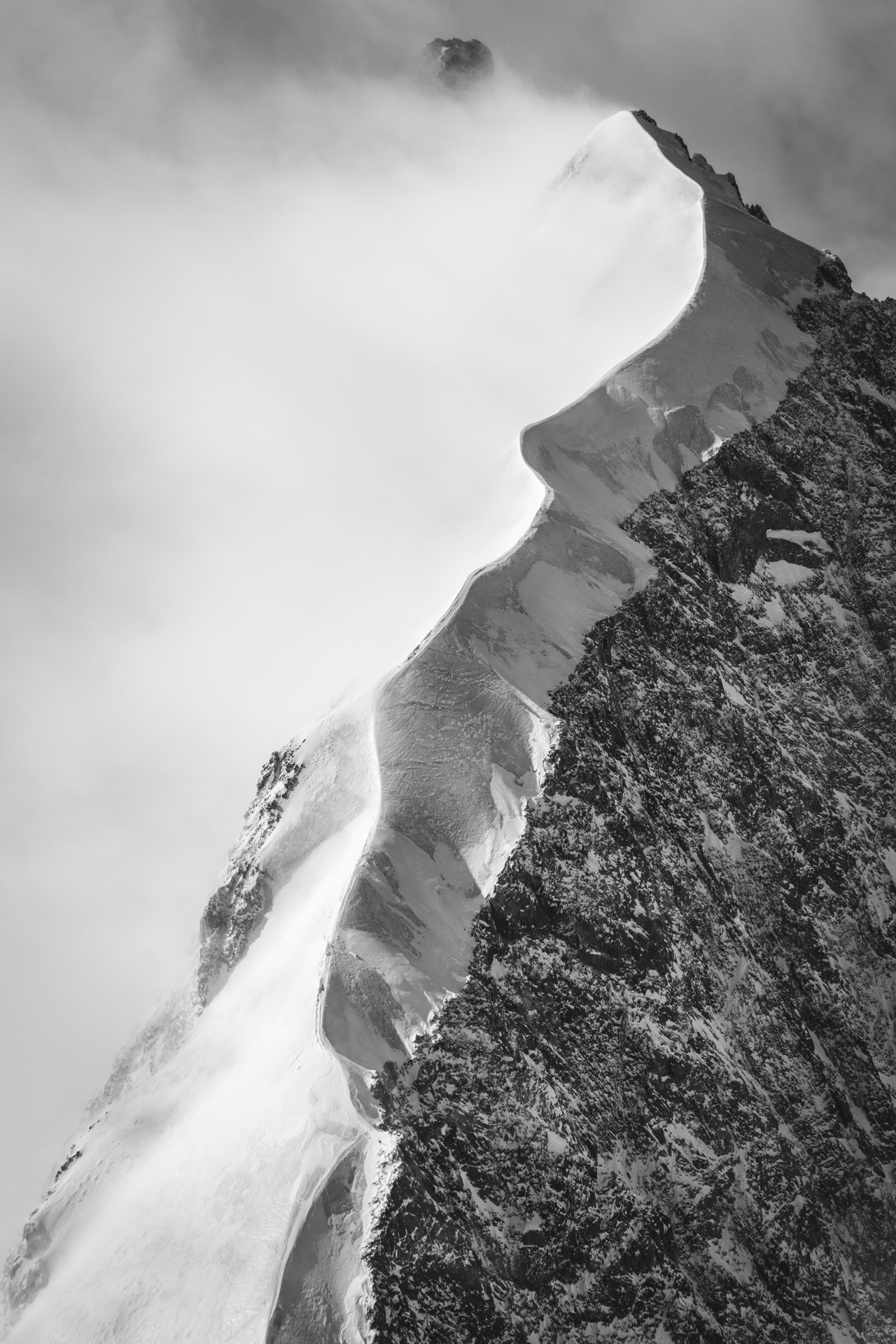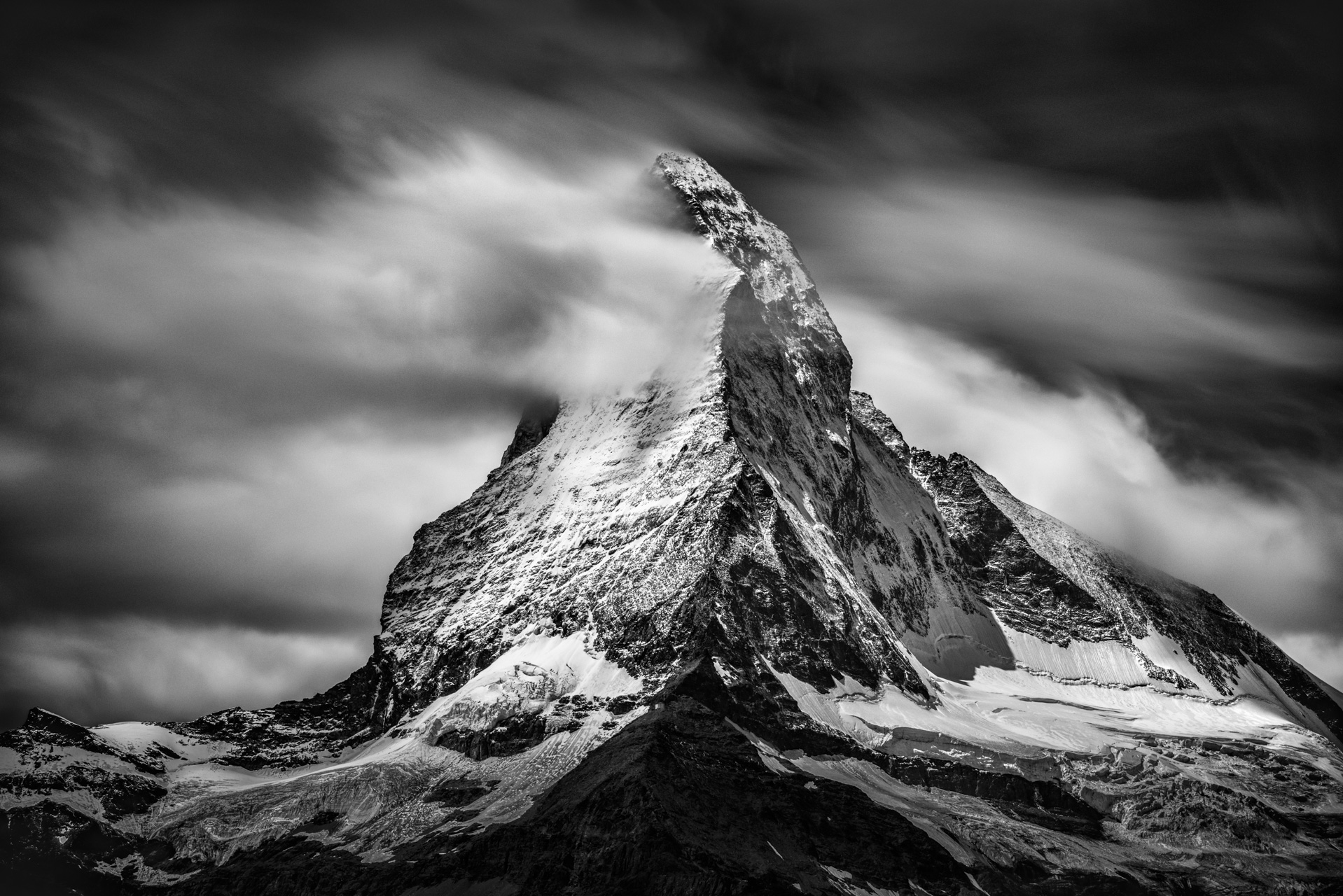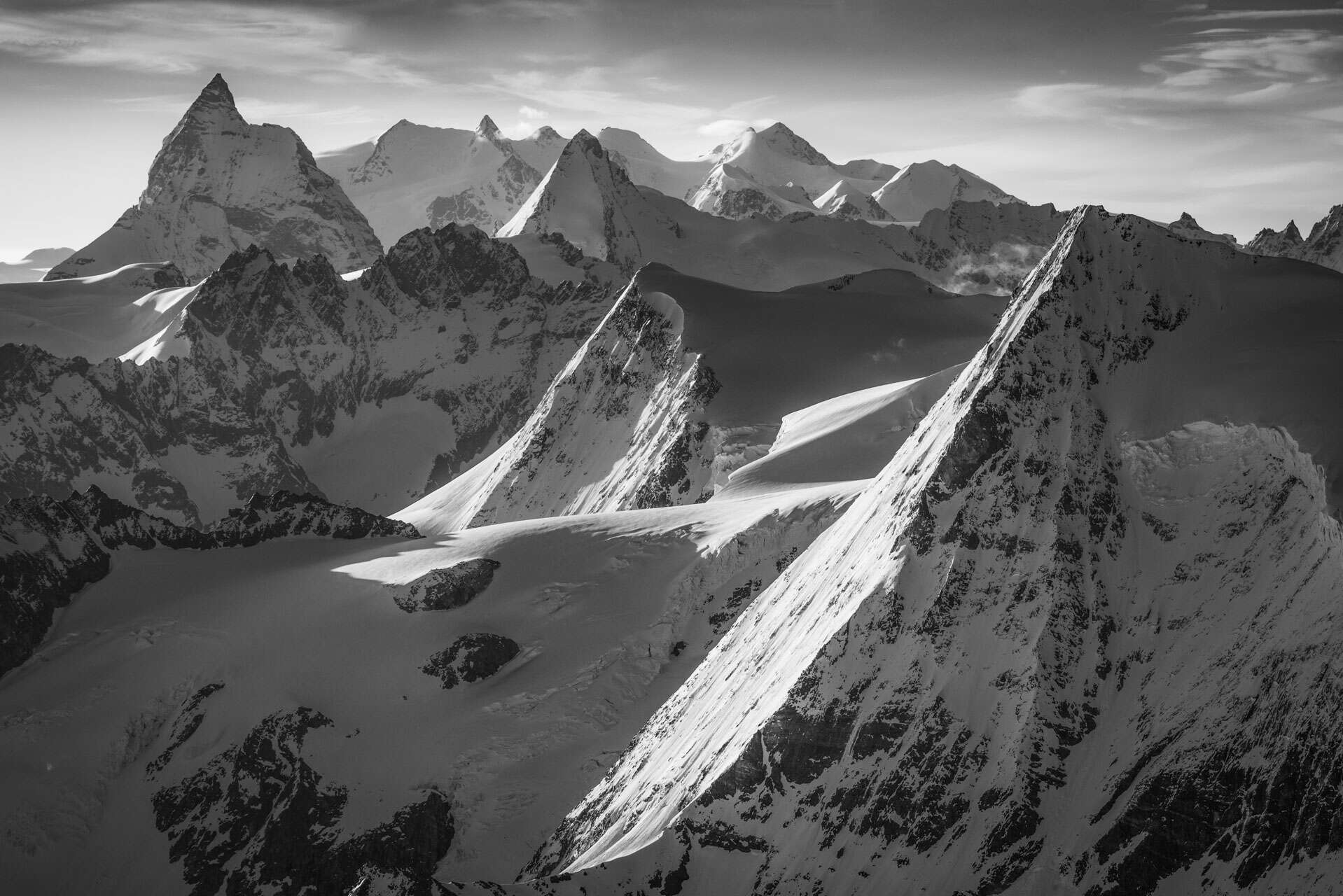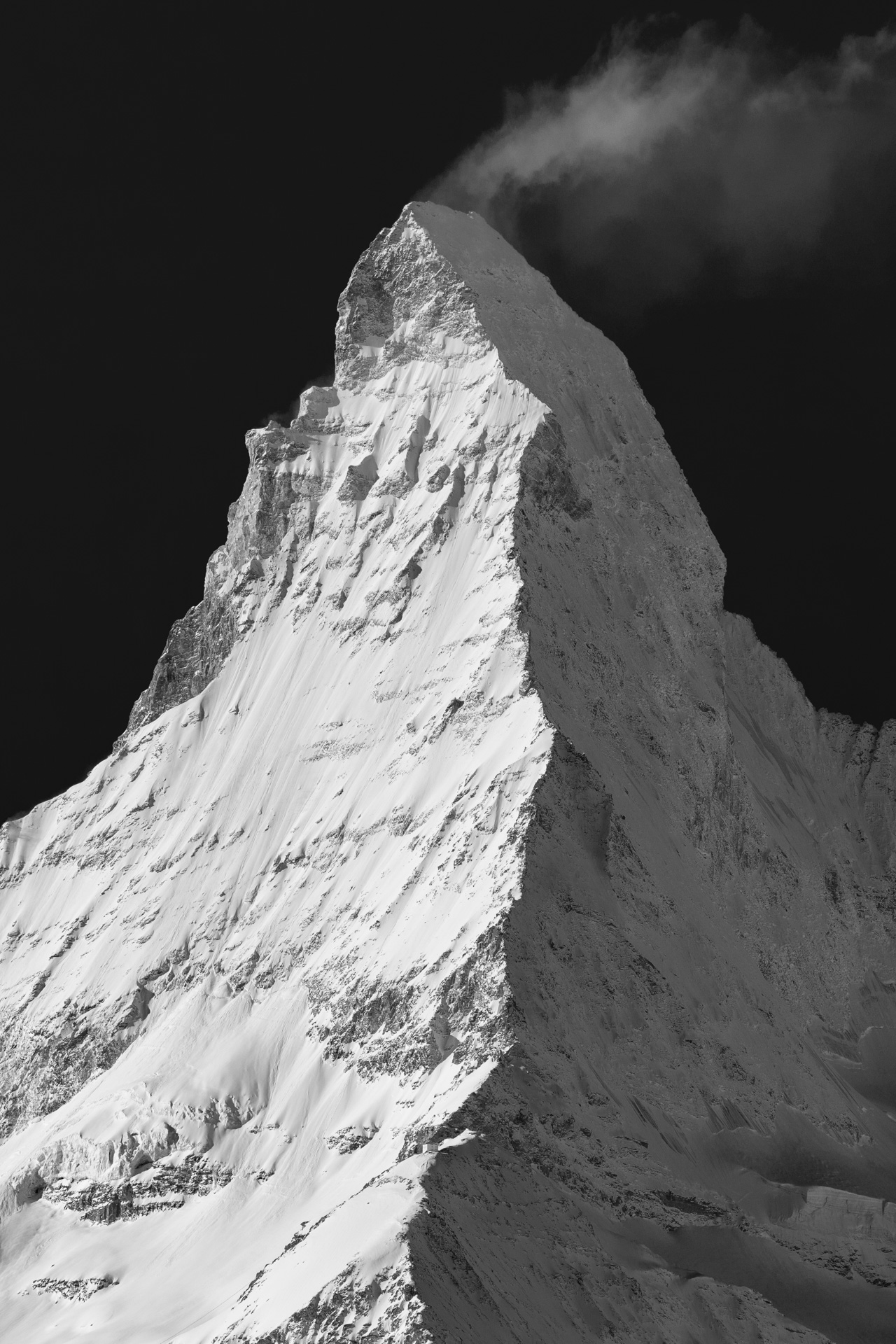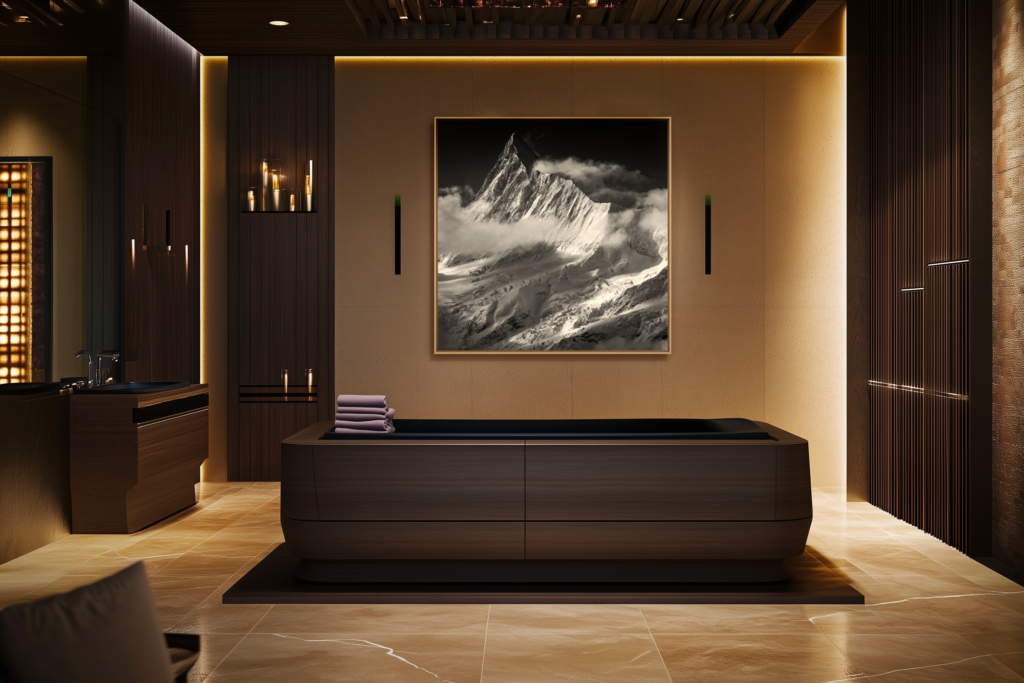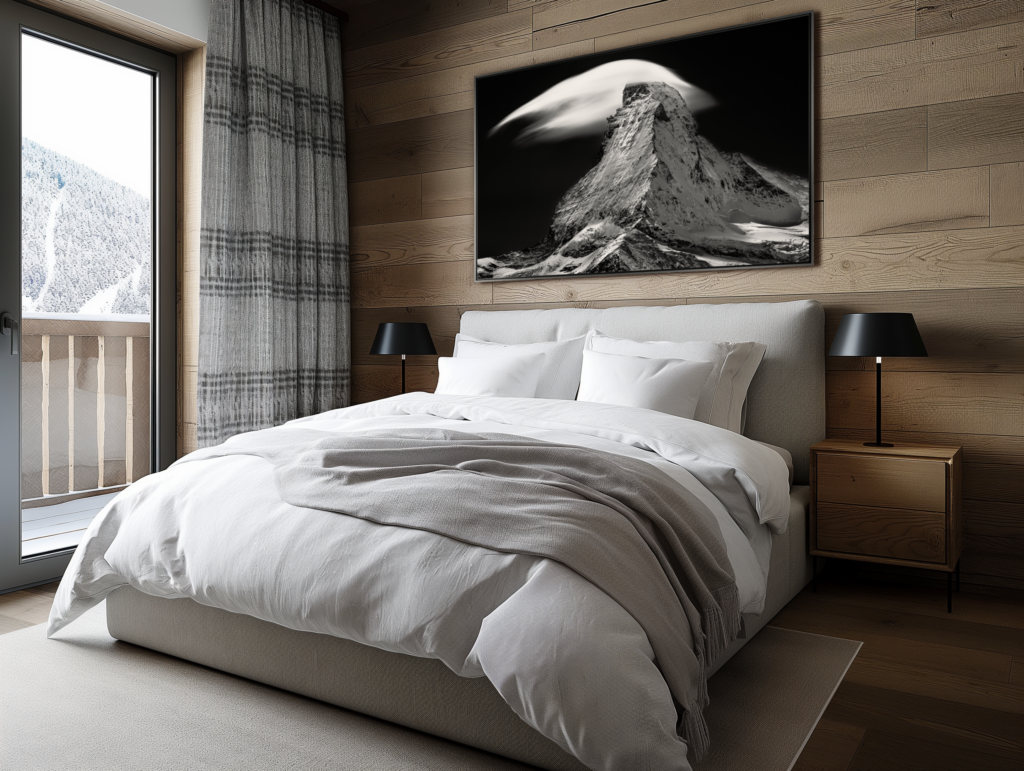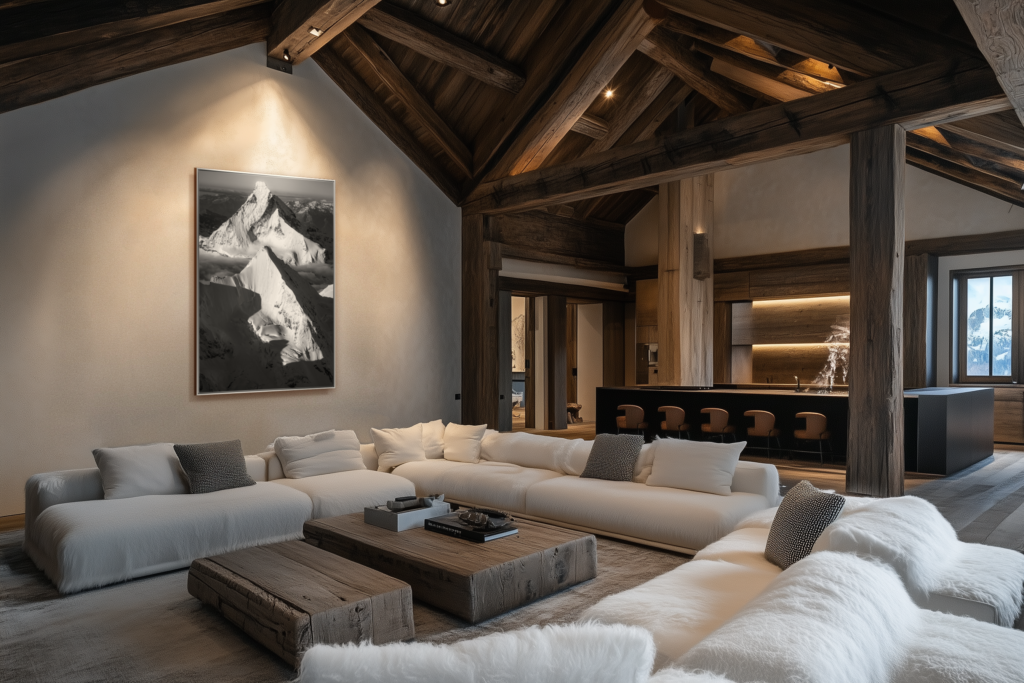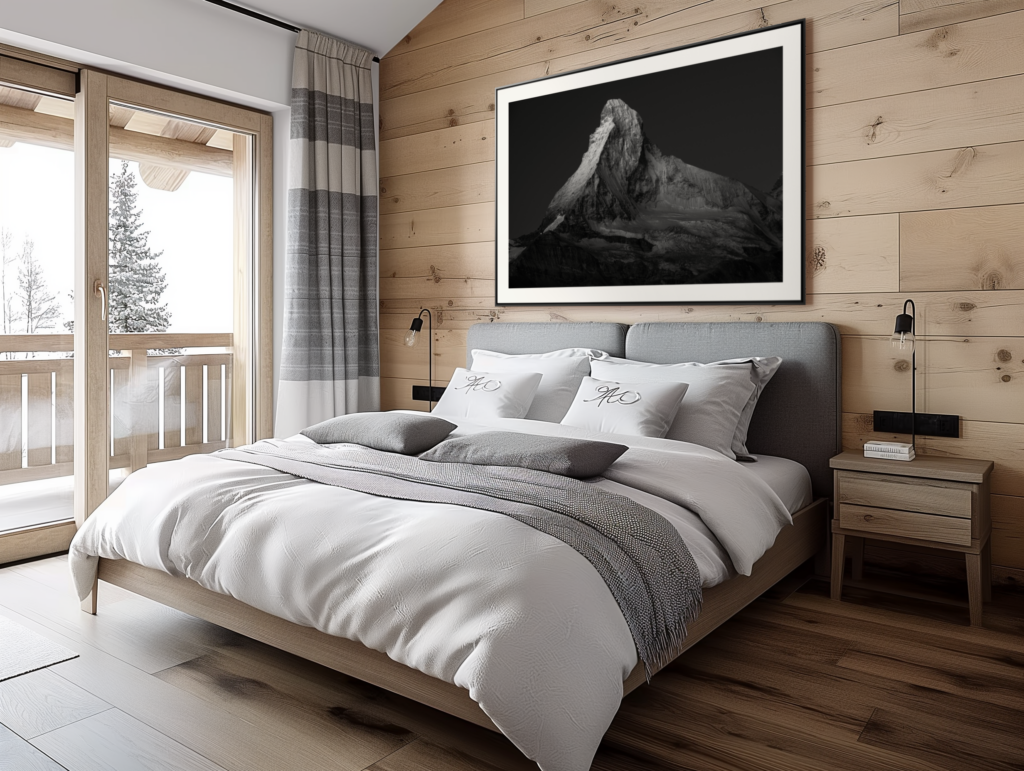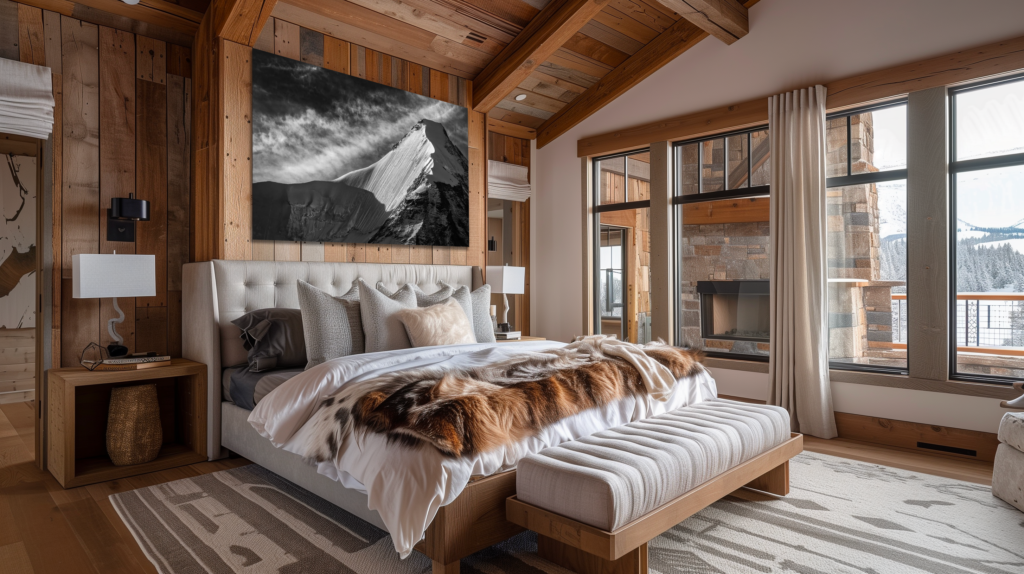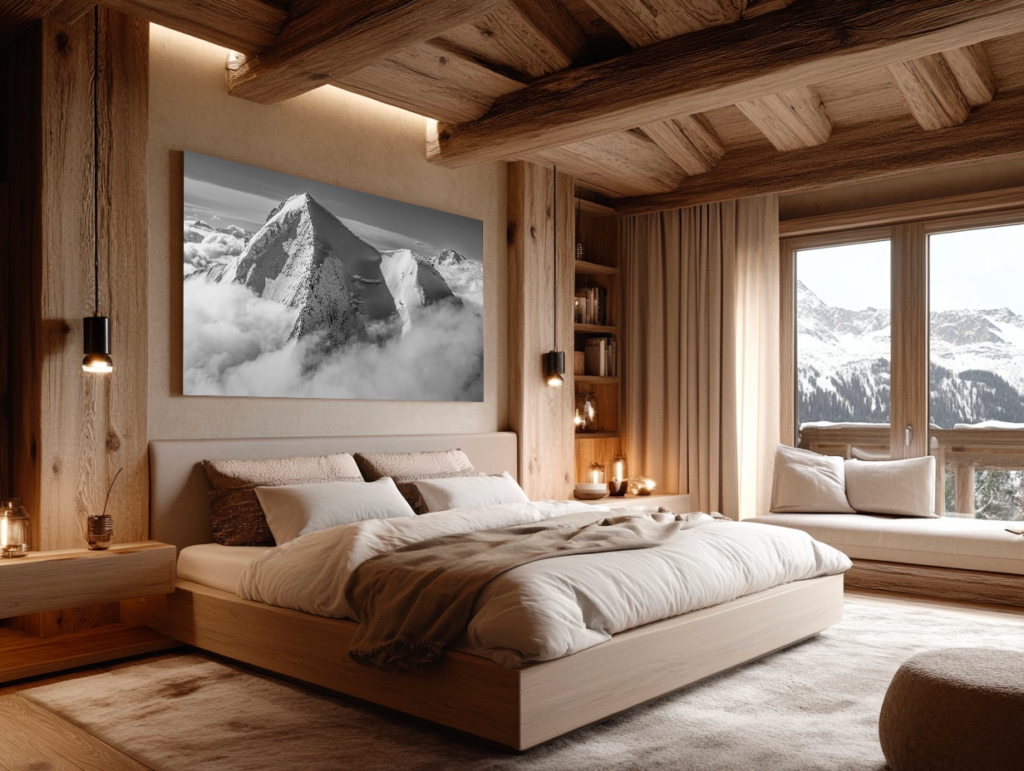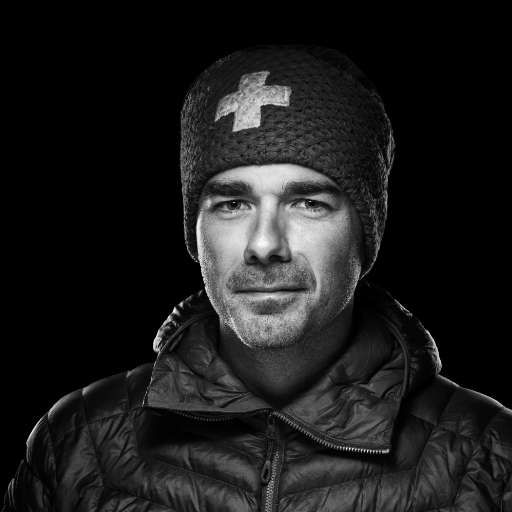The Alps have fascinated people for centuries. They inspire artists, nourish the collective imagination, and perpetuate a sense of grandeur while providing a profound sense of calm. Bringing Alpine art into your home is an invitation to experience the quiet strength and spirit so characteristic of life at altitude.
This guide offers concrete, applicable solutions for creating a summits atmosphere in harmony with your living space, whether it's a traditional chalet or a contemporary apartment.
1. Understanding the essence of Alpine art
contemporary alpine art stands out for its diversity and its ability to transcend traditional clichés to offer a renewed vision of the mountains.
Key themes :
- The majesty of the summits - grandiose panoramas, aerial views, rocky ridges
- Emblematic fauna - ibex, chamois, eagles, marmots
- Alpine flora - edelweiss, gentians, firs, high meadows
- Scenes of traditional life - chalets, mountain pastures, local festivals
Evolution towards modernity :
- Contemporary photography - Minimalist and monochromatic approaches such as those by Thomas Crauwels
- Mixed techniques - Combinations of materials and media (collage, printing on innovative media)
- Reinvented sculpture - Use of unexpected materials (metal, glass, resin)
To remember: Today's Alpine art goes far beyond traditional folkloric representations to offer contemporary works that integrate into all types of interiors.
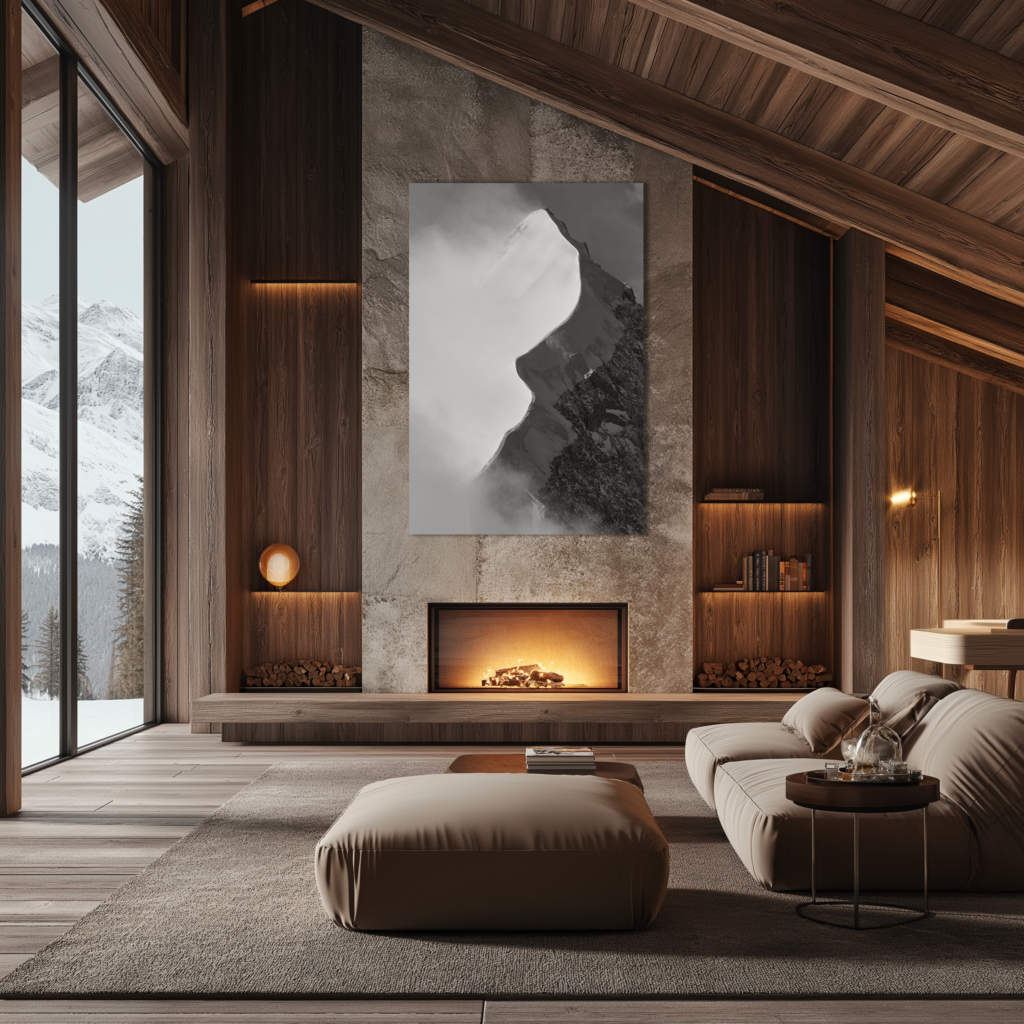
2. Define your vision before you start
Before buying your first pieces, take the time to clarify your project.
Preparatory exercise in 3 steps :
- Identify your style: Warm and traditional? Minimalist contemporary ? Genre fusion?
- Select your palette: Natural shades (wood, stone)? Strong contrasts (white/black)? Colorful touches?
- List 3 keywords that define the desired atmosphere (e.g. "soothing, authentic, uncluttered").
Questions to ask yourself :
- What kind of dialogue would you like to establish between inside and outside?
- Do you prefer a few major pieces or a more varied collection?
- What emotion would you like to feel when you contemplate these works on a daily basis?
3. Select works according to space
The success of an artistic integration largely depends on the match between the work and its location.
Depending on room dimensions :
| Type of space | Recommended format | Example of work |
|---|---|---|
| Large living room with high ceilings | Monumental work (100×150 cm minimum) | Photographic panorama of a mountain range |
| Medium-sized space (dining room, office) | Single or diptych medium format | Canvas or print 70×100 cm |
| Corridor, staircase | Series of small formats | Suite of 3-5 photographs 30×40 cm |
| Small parts | Compact but impactful format | Compact but impactful format |
Technical criteria to consider :
- Set-back distance available - Allow 2 to 3 times the width of the work for optimum appreciation.
- Traffic flow - Avoid locations where the work could be hit
- Natural focal points - Identify where the eye spontaneously lands as it enters the room
Practical tip: Before you buy, cut a cardboard box to the exact dimensions of the work and fix it temporarily in place. Observe the effect for a few days.
4. Mastering lighting, a key factor in showcasing your products
Light can magnify or, on the contrary, completely distort a work of alpine art.
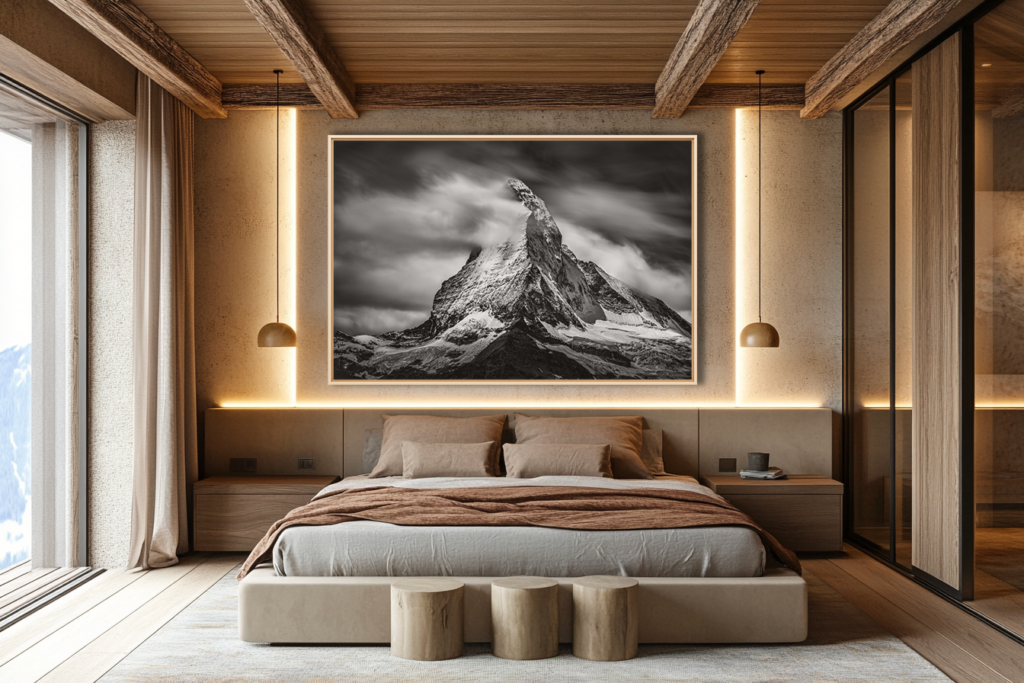
Lighting solutions by type of work :
- For photographs :
- Avoid direct exposure to sunlight (risk of discoloration)
- Use side lighting to reduce reflections on the glass
- Choose directional spotlights with CRI > 90 to respect nuances
- For paints :
- Install even lighting over the entire surface
- Keep a distance of 50-60 cm between the light source and the artwork.
- Choose a neutral color temperature (4000K) for colored artwork
- For sculptures :
- Choose multidirectional lighting to reveal volumes
- Create shadows that accentuate relief
Recommended equipment:
- [ ] Adjustable spotlight rails with dimmers
- [ ] LED bulbs with high CRI (>90)
- [ ] UV filters for windows close to sensitive artwork
- [ ] Eventually, a programmer to vary the ambience according to the time of day
5. Create visual and material harmony
To ensure that Alpine art blends seamlessly into your space, pay particular attention to the coherence of the surrounding elements.
Successful material combinations:
- Black-and-white photography + Light wood + metal accents = a sleek, contemporary feel
- Traditional paint + dark wood + stone + warm textiles = authentic chalet atmosphere
- Mountain-inspired abstract art + concrete + glass + indirect lighting = sophisticated industrial style
Additional elements to be integrated :
- Textiles :
- Natural wool plaids
- Cushions with geometric patterns evoking summits
- Carpets with contrasting textures reminiscent of alpine landscapes
- Discreet accessories :
- Small objects made of natural materials (driftwood, stone, horn)
- Alpine photography books on a coffee table
- Interior plants evoking mountain flora
Avoid : An overload of decorative objects that disperse attention and diminish the impact of the main works.
6. Focus on alpine monochrome photography
Black-and-white photography occupies a special place in contemporary Alpine art, thanks in particular to artists such as Thomas Crauwels.
Specific advantages of monochrome photography :
- Timelessness - Free from fashions, retaining its evocative power
- Texture enhancement - Highlights the roughness of rock, the purity of snow
- Adaptability - Integrates into all interior styles, from the most traditional to the most modern
- Emotional power - Enhances the dramatic, contemplative character of alpine landscapes
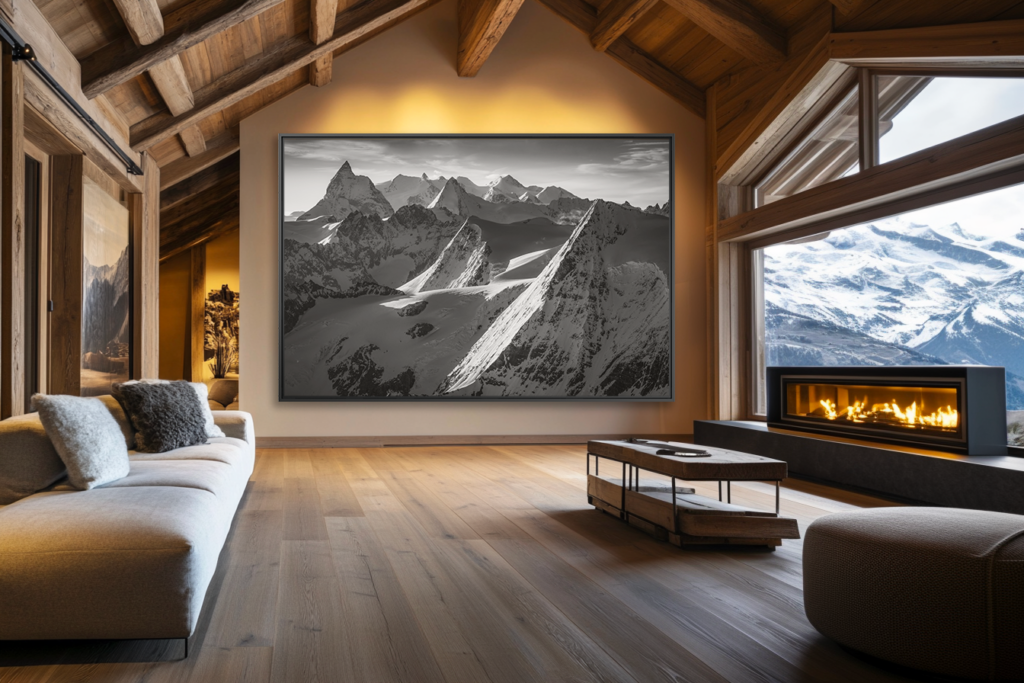
Optimum installation guide :
- Framing :
- slim frame in black metal or brushed aluminum for contemporary style
- Generous white margin around image (minimum 8-10 cm mat)
- Museum-quality anti-reflective glass for precious prints
- Positioning :
- Average height of image center: 160 cm from floor (adaptable according to configuration)
- On a neutral wall (white, Light grey, beige) to maximize contrast
- With enough space to let the work breathe
- Special lighting :
- Lighting directed at 30° to minimize glare
- Adjustable intensity depending on ambient brightness
- Color temperature between 3000K and 4000K
7. Adapting alpine art to different types of space
Each environment has its own characteristics, which influence the choice and integration of the works.
In a traditional chalet :
- Preferred locations :
- Above the fireplace (centerpiece)
- On the main wall of the living room (facing the entrance)
- In the entrance to create a strong first impression
- On staircase landings to punctuate traffic flow
- Particularly suitable works :
- Black and white photographs of iconic summits
- Alpine landscape paintings in generous formats
- Sculptures in wood or stone evoking the local fauna
In a contemporary apartment :
- Strategic locations :
- Minimalist wall as backdrop
- Facing the relaxation area (sofa, armchair)
- Perspective from the dining room or open kitchen
- Recommended works :
- Large-format photographs with refined processing
- Abstract art inspired by mountain shapes and textures
- Multimedia installations using light and volume
In professional areas:
- Impact zones :
- Lobby (essential first impression)
- Meeting rooms (inspiration and escape)
- Corridors and transition areas (visual narrative)
- Effective approaches :
- Thematic series creating a coherent identity
- Monumental work as a corporate signature
- Seasonal rotation to maintain interest and freshness
8. Preserving and maintaining your alpine works
The specificities of the mountain climate and the chalets require special care for the conservation of the works.
Seasonal maintenance checklist :
- [ ] Spring: General inspection after the heating season, Soft frame cleaning
- [ ] Summer: Protection against more intense UV rays, check for adhesion
- [ ] Autumn: Preparing for heating, controlling humidity
- [ ] Winter: Regular monitoring during the peak heating season
Ideal environmental conditions:
- Temperature: 18-22°C, avoid sudden fluctuations
- Relative humidity: 45-55%.
- Light: limit UV exposure, use filters if necessary
- Distance from heat sources: Minimum 1.5m from chimney or stove
Recommended protective equipment :
- Thermo-hygrometer for monitoring ambient conditions
- Dehumidifier/humidifier as required
- UV filters for windows in bright rooms
- Special cleaning kit (microfiber cloths, Soft feather dusters)
Important: For valuable works, consult a conservation specialist once a year and check your home insurance for adequate coverage.
9. Develop a consistent collection over time
Alpine art can become a central element of your decorative identity, evolving over the years.
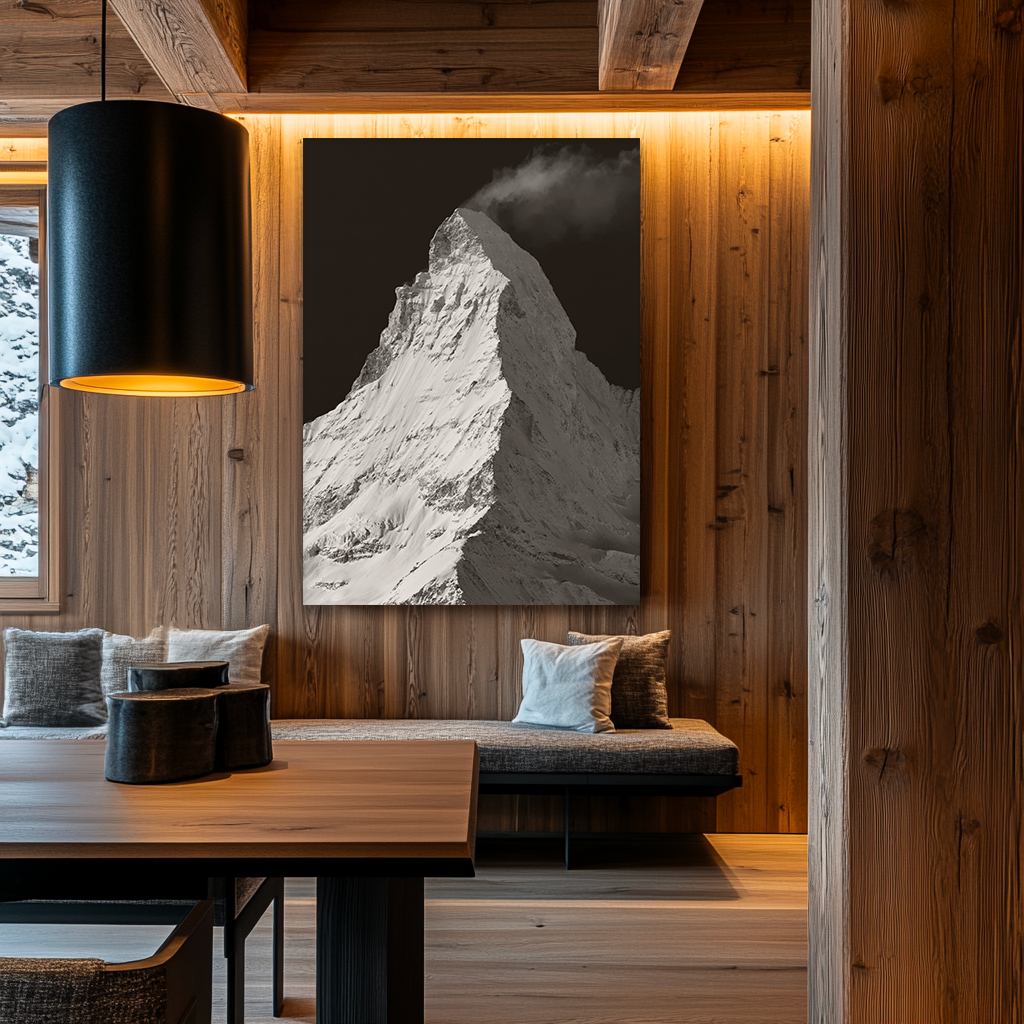
Progressive acquisition strategy :
- Start with a centerpiece that defines your style and theme
- Complete with secondary works that dialogue with the first one
- Explore different techniques while maintaining visual consistency
- Renew certain elements according to the seasons or changes in your interior.
Sources to enrich your collection :
- Alpine art galleries (physical or online)
- Festivals and exhibitions dedicated to mountain photography
- Artists' studios during open days
- Auctions specializing in regional art
- Tailor-made controls for rooms that fit your space perfectly
Documenting your collection :
Create a folder for each work containing :
- Certificate of authenticity and purchase invoice
- History of the work and the artist's approach
- Photos of the work in different installation contexts
- Personal notes on what struck you about the piece
10. Creating a complete alpine experience
Beyond the visual aspects, the Alpine ambience can be enhanced by a multi-sensory approach.
Additional elements to be integrated :
- Soundscape :
- Discreet natural sounds (water trickling, wind in the fir trees)
- Music inspired by Alpine traditions revisited
- Moments of contemplative silence (the mountains also teach us the value of silence)
- Olfactory dimension :
- Candles with the scent of alpine forests or wood fires
- Fir, pine or mountain lavender essential oil diffusers
- Natural woods that release their aromas (cedar, larch)
- Tactile experiences :
- Variety of textures reminiscent of mountain contrastsSoft, smooth/textured)
- Natural materials to touch (polished stone, raw wood, woven wool)
- Contrasting temperatures between warmer and cooler areas
Activities to liven up your space :
- Organize themed evenings around screenings of mountaineering films
- Host a photographer or artist for an intimate presentation of their work
- Create a personal ritual of daily contemplation of an outstanding work of art
Conclusion: Alpine art as an invitation to an inner journey
Alpine art transforms your home into a space for connecting with nature and its lessons of beauty, strength and serenity. Whether it's a photograph capturing the unique light of dawn on a summit or a sculpture evoking the elegance of an ibex, each intentionally chosen piece becomes a portal to that mountain experience that fascinates and invigorates us.
By Next the principles and recommendations of this guide, you'll not only create an aesthetically harmonious space, but also a living space that tells the story of your personal relationship with the mountains. A permanent invitation to look up to the summits, even in the heart of your own home.
A final word: Alpine art in your home is not just decoration, but a lifestyle choice that celebrates the grandeur of nature, contemplation and authenticity - values that are more essential than ever in our contemporary world.
